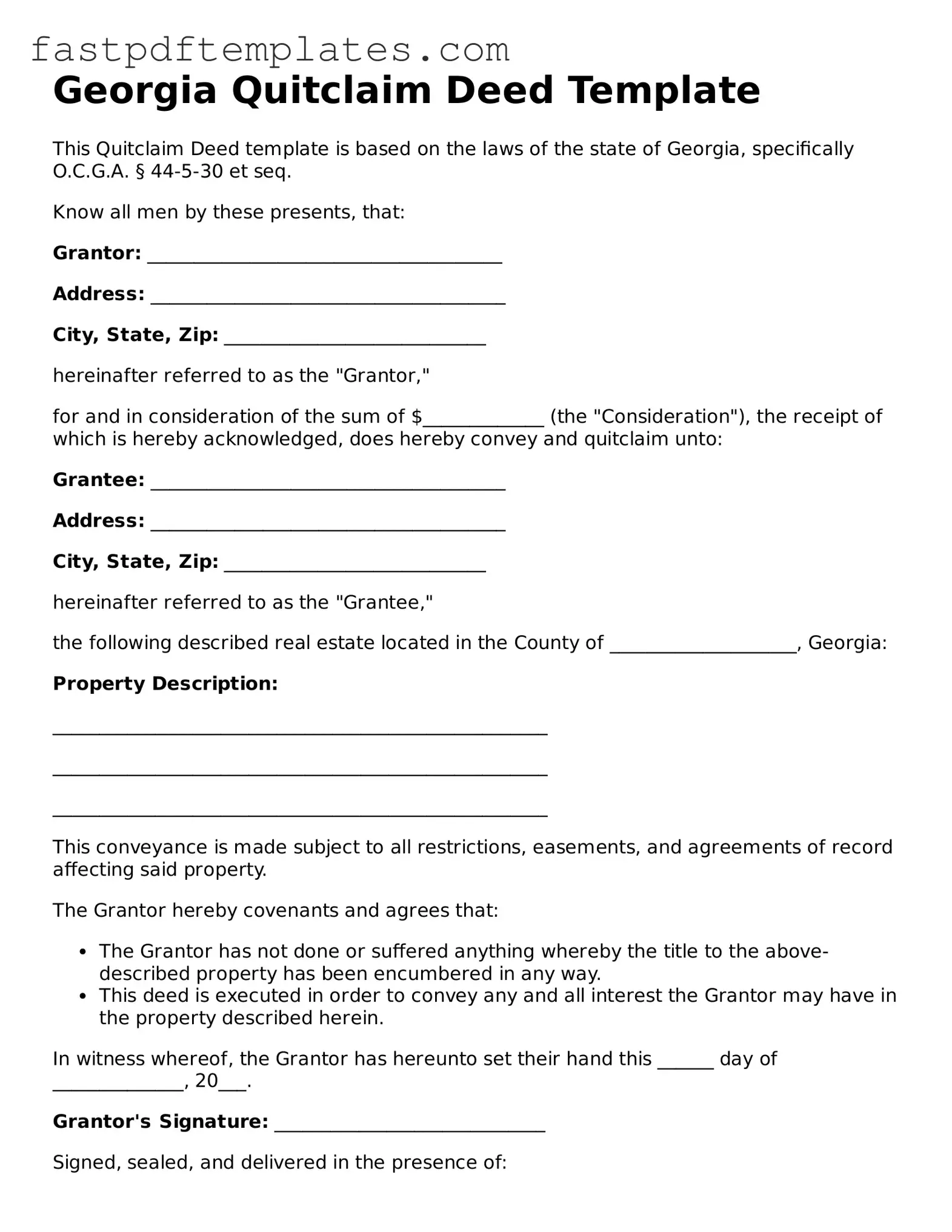Georgia Quitclaim Deed Template
This Quitclaim Deed template is based on the laws of the state of Georgia, specifically O.C.G.A. § 44-5-30 et seq.
Know all men by these presents, that:
Grantor: ______________________________________
Address: ______________________________________
City, State, Zip: ____________________________
hereinafter referred to as the "Grantor,"
for and in consideration of the sum of $_____________ (the "Consideration"), the receipt of which is hereby acknowledged, does hereby convey and quitclaim unto:
Grantee: ______________________________________
Address: ______________________________________
City, State, Zip: ____________________________
hereinafter referred to as the "Grantee,"
the following described real estate located in the County of ____________________, Georgia:
Property Description:
_____________________________________________________
_____________________________________________________
_____________________________________________________
This conveyance is made subject to all restrictions, easements, and agreements of record affecting said property.
The Grantor hereby covenants and agrees that:
- The Grantor has not done or suffered anything whereby the title to the above-described property has been encumbered in any way.
- This deed is executed in order to convey any and all interest the Grantor may have in the property described herein.
In witness whereof, the Grantor has hereunto set their hand this ______ day of ______________, 20___.
Grantor's Signature: _____________________________
Signed, sealed, and delivered in the presence of:
_____________________________ (Witness)
_____________________________ (Witness)
State of Georgia, County of ____________________
Before me, a notary public in and for said county and state, personally appeared ___________________________________ (Grantor's Name), who is known to me or has produced _________________ as identification, and who acknowledged that they executed the foregoing instrument for the purposes therein contained.
Given under my hand and official seal this _____ day of ______________, 20___.
Notary Public: _______________________________
My Commission Expires: ___________________
